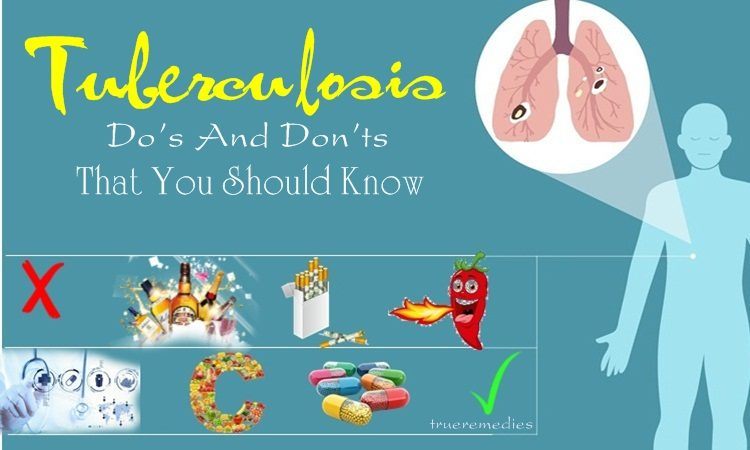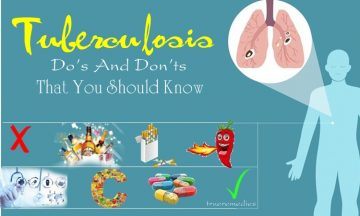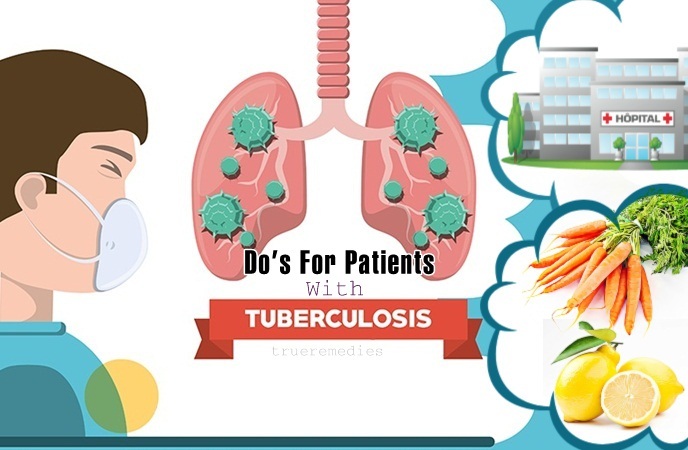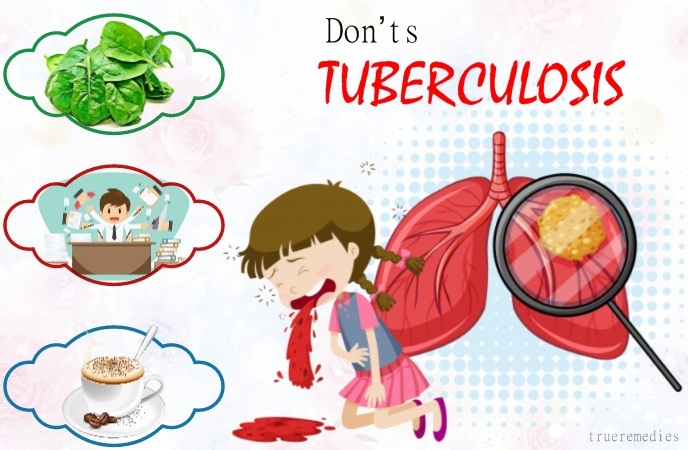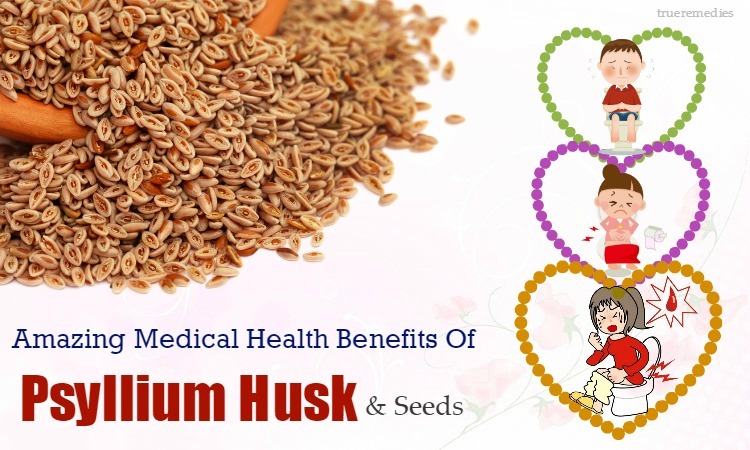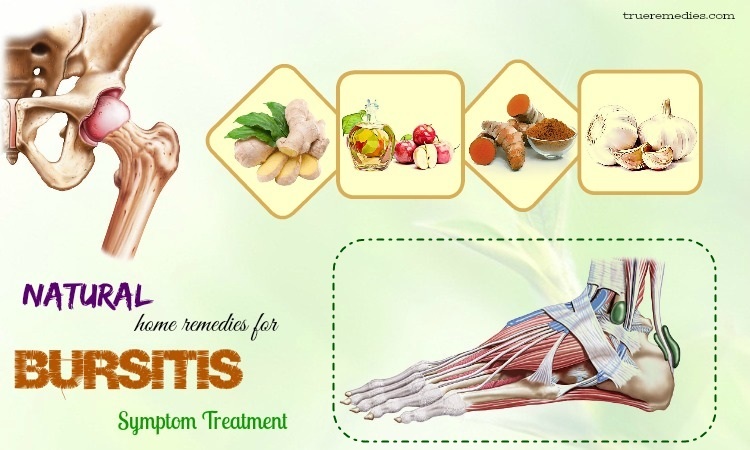Contents
Tuberculosis (pulmonary tuberculosis) is caused by Mycobacterium tuberculosis. The disease commonly affects the lungs but sometimes other parts of the body, such as lymph nodes, kidneys, and bones. Tuberculosis is an infectious disease that can cause death to patients[1]. Currently, with the progress of modern medicine, pulmonary tuberculosis has been completely cured. Today, TrueRemedies will introduce to you 15 tuberculosis do's and don'ts that you should know!
- 19 Effective Home Remedies For Phlegm Cough In Throat
- 17 Tips How To Prevent Pneumonia In Child & The Elderly Naturally
- 35 Proven Ways How To Stop Coughing At Night Naturally
I. The Causes Of Tuberculosis
- Magnetotactic bacteria: The Magnetotactic bacteria are considered to be the main cause of tuberculosis, and it can be spread from person to person through the respiratory tract[2].
- Exposure To A Pathogen: All people contacting to a person with tuberculosis or wastes containing Magnetotactic bacteria can be very susceptible to Magnetotactic bacterial infection[3].
- Environmental Pollution: Air with lots of dust and moisture creates favorable conditions for TB bacteria to develop, and this is also one of the most common reasons for pulmonary tuberculosis today[4].
II. Some Typical Symptoms Of Tuberculosis
When you have the following symptoms of pulmonary tuberculosis, you should go to the clinic early to treat it promptly[5]:
- Coughing: This is a symptom of acute and chronic tuberculosis. In fact, a cough can be caused by many causes such as pneumonia, bronchiectasis, tuberculosis, etc. In the case of coughing over 3 weeks and taking antibiotics without relieving, you are at high risk of tuberculosis.
- Spitting Out Phlegm: This is a common symptom of pulmonary tuberculosis. It is caused by irritation or lesions in the bronchial tubes and lungs.
- Coughing Up Blood: Coughing up blood is also a symptom of pulmonary tuberculosis that can occur in 60% of patients. It appears when there is damage or bleeding in the respiratory tract.
- Chest Pain And Dyspnea: A serious cough will cause suppression to bronchial tubes, leading to dyspnea and chest pain.
- Losing Weight: This is a common symptom appearing in a lot of tuberculosis patients. People who lose weight, not due to diarrhea, malnutrition, HIV/AIDS infection but have the above symptoms should go to see a doctor immediately.
- Excessive Sweating: Pulmonary tuberculosis causes excessive sweating a lot because of a neurological disorder. And all people with this symptom also should go to the clinic to receive the immediate cure.
15 Tuberculosis Do’s And Don’ts That You Should Know
III. Do’s For Patients With Tuberculosis
Whenever you accidentally communicate with a patient with tuberculosis, the bacilli in tiny droplets of the saliva of the patient will be spread into the air. If you accidentally inhale them, they can make you get tuberculosis[6].
Because of such a mechanism of transmission, anyone can get tuberculosis. So knowing the do's and don’t for tuberculosis is very important to treat and prevent the disease. Now, find out what to do when you find out you have tuberculosis:
1. Resolving The Source Of Infection
One of the first in the list of 15 tuberculosis do’s and don’ts that you should know is to thoroughly resolve the source of infection. It means that kill the bacteria, causing tuberculosis completely. An untreated tuberculosis patient will infect 10-15 people each year, especially all people living and working with them[7].
2. Following The Treatment Therapies
Strictly follow the tuberculosis treatment therapies that your doctor has given to you. All the patients with tuberculosis have to take the correct treatment regimen, take enough medicine, and take medicine regularly at a certain time of the day. You should use the medicine once a day in the morning and when you are hungry. You need to wait for 30 to 60 minutes before eating breakfast to help absorb medicine more easily for maximum effectiveness. In case you can't take the pill when you're hungry, you can drink some milk and then take it for a while. Do not give up the treatment.
TrueRemedies Partner Solutions

Need a Help from the Leading Expert Online, Available 24/7?
They’re all here and ready to answer your questions online or by phone. Keep asking questions until you get the answer you need.
3. Isolating Patients
All the patients with tuberculosis should be isolated from surrounding people as soon as tuberculosis is detected[8] and at least 2 more weeks from the time when the anti-tuberculosis drug is prescribed. Tuberculosis patients must wear a facemask, cover the mouth when coughing and sneezing, and spit saliva into a fixed place. If you have to lie with a patient on the same bed, you should lie in the opposite direction to avoid their breath hitting into your face. Finally, the house should be airy, dry, clean, and hygienic.
4. Going To The Hospital
If anyone has some symptoms of tuberculosis, take him or her to the hospital immediately to detect tuberculosis infection and have a timely treatment plan. There can be no unusual problem at that time, so you should not be subjective. Take him or her to re-examine every 3 to 6 months, until 2 years later.
5. The Sooner, The Better
The sooner, the better for tuberculosis treatment[9]. So patients should not be subjective to neglect the disease. Instead, they must see a doctor to get early treatment.
6. Avoiding Something
Moreover, people with tuberculosis need to know how to maintain their health, such as eating enough nutritious foods, having a proper resting regime, and avoid doing heavy works. People with diseases must be conscious to avoid infecting others by using separate cups, bowls, and face washcloths[10]. Also, patients should sleep alone and avoid spitting indiscriminately to spread the tuberculosis bacteria.
7. Enhancing Vitamins A, C, And E
People with tuberculosis often lack these vitamins. Vitamins A, C, and E help to protect the mucous membranes, enhance the immune system, and avoid the risk of infection[11] [12] [13] [14].
Foods rich in vitamins A, C, and E include tomatoes, oranges, lemons, mangoes, carrots, dark green vegetables, and red meats such as beef, lean pork, cattle, and poultry liver, etc.
IV. Don’ts
In addition to some healthy foods, patients with tuberculosis also need to avoid eating the following foods:
1. Spicy Foods
Patients with tuberculosis should not eat spicy food such as mustard seed, ginger, and chili because they can make prolonged cough, leading to serious tuberculosis.
2. Caffeine-Containing Drink
Coffee can help us work efficiently because it contains caffeine that has a good impact on the nervous system. But tuberculosis patients should limit drinking coffee, but a little coffee is okay.
3. Spinach
As you may know, spinach is one of nutritious vegetables that are rich in vitamins and minerals, and it is good for tuberculosis patients. However, eating spinach is not recommended by all doctors for patients with tuberculosis. Why? This is because the vegetable contains a lot of oxalic acids. When these acids enter the human body, they will combine with calcium to form insoluble calcium oxalate. It leads to calcium deficiency, making patients recover their health in a long time.
4. Fast Food
These types of fast food like hamburgers or sandwiches are very convenient for our lives. However, these foods are not recommended for patients with tuberculosis because they contain lots of cholesterol and fat. Therefore, you should use healthy foods such as fish, meat, eggs, and tofu instead.
5. Overworking
When you have tuberculosis, your body will be very weak, and the resistance is reduced. So do not overwork[15]; you should rest properly and get enough nutrients internally. Resting is the best and simplest way to treat tuberculosis.
6. Staying Up Late
Staying up late and having insomnia are the causes of serious physical and mental depression. A lot of sleep deprivation leads to anorexia; if it lasts a long time, your body will be weakened, negatively affecting the health of tuberculosis patients[16].
7. Smoking
Patients with tuberculosis should not smoke in any form. According to scientists, smoke contains a lot of toxic gases that can cause cancer. And smoking certainly will make your tuberculosis condition worse. Other studies show that it is recommended to add interventions for quitting smoking in the current tuberculosis control practice[17] [18] [19].
8. Drinking Alcohol
Drinking a little alcohol is proven to have positive effects on the body. But abusing it leads to many serious consequences. Many people think that drinking alcohol has nothing to do with tuberculosis. However, this is completely a misconception because drinking alcohol will slow down your tuberculosis treatment process[20] [21].
V. The Most Effective Ways To Prevent Tuberculosis
1. Using The BCG Vaccine
Injecting vaccine BCG is the best and most efficient way to fight against tuberculosis[22]. To achieve the highest effectiveness, it is necessary to inject with correct technique and dose. Vaccines must be properly stored, and the quality must be assured throughout the entire process of production.
2. Paying Attention
Cover your mouth when sneezing and wash your hands regularly, especially before eating and after using the toilet. Tuberculosis can be completely prevented and treated if you pay attention to your health. When you detect some of the symptoms of tuberculosis, see your doctor immediately to take appropriate measures.
3. Notice Closely When Detecting Symptoms
If you find your surrounding people with the above symptoms of tuberculosis, you should pay attention to caring for your health and the patients.
- Sterilize blankets, curtains, pillows, personal belongings, clothes of people with tuberculosis by dipping them in boiling water or drying in the sun to kill tuberculosis bacteria.
- Sanitize the houses of patients with tuberculosis, and don’t spit indiscriminately and share personal items with other people to prevent tuberculosis bacteria from spreading out for your family members.
VI. How To Treat Tuberculosis Effectively
1. Take Anti-Tuberculosis Drugs
Tuberculosis patients must be diagnosed, and need to take the treatment at the tuberculosis institute, following the physician's instructions. Patients with tuberculosis must use anti-tuberculosis drugs with the proper doses, daily and in a long time. They have to go to the hospital to have their sputum tested three times after the 2nd or 3rd month, the 5th, and 8th month of the treatment period.
2. Don’t Quit The Treatment
After several weeks of using anti-tuberculosis medicine, the disease can be relieved and patients feel better, leading to gaining weight. It is a good result, but the disease is not cured. Patients still have to continue the treatment for 8 months. If the patients quit the treatment (e.g., stop taking the drug before 8 months of using), they cannot cure the disease completely. It can quickly recur, and the dangerous thing is that the tuberculosis bacteria become resistant to anti-tuberculosis drugs, which makes the treatment more difficult than before. That is the reason why patients should maintain the process of treatment with the doctor’s instructions.
3. Garlic
There are several home remedies for treating tuberculosis that you should not miss, and one of them is garlic. Garlic is proven to inhibit the reproduction of the tuberculosis bacteria. This is thanks to the antimicrobial value of allicin – a compound in garlic[23].
Ingredients:
1 to 2 tsp. of minced garlic
Directions:
- Add the minced garlic to your diet.
- Also, you can chew on raw garlic directly.
- You must do this daily
VII. Side Effects Of Anti-Tuberculosis
Anti-tuberculosis drugs may have some side effects such as nausea, dizziness, pruritus, etc. They are mild side effects, so patients still continue to take medicine. If patients experience amblyopia (blurred vision), joint pain, and hearing loss, they had better stop taking medicine and then see a doctor immediately.
In short, tuberculosis is a really dangerous disease, and you need to pay attention to prevent it. And if you find any symptoms of tuberculosis, see your doctor as soon as possible, which can help you to avoid bad consequences. If you know other tuberculosis do’s and don’ts, please share with us in the comment box. Visit our News & Facts page to read more of similar useful contents.
Read more: 5 Best Home Remedies To Help With Cervical Spondylosis. This article was medically reviewed/ fact checked by Dr. Brent Wells.

